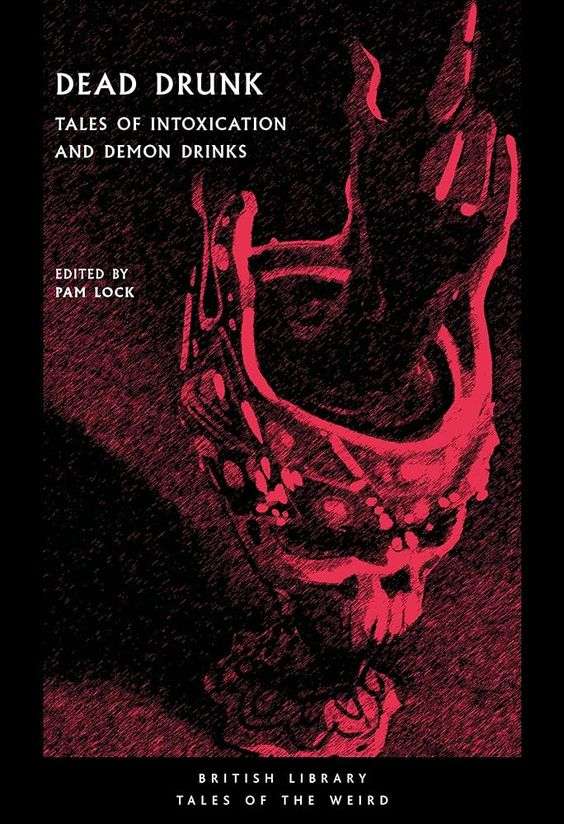Dead Drunk: Tales of Intoxication and Demon Drinks Edited by Pam Lock
British Library, p/b, £9.99
Review by Tori Borne

The British Library’s latest instalment to their Tales of the Weird series, Dead Drunk, features a collection of harrowing tales where drunkenness, the supernatural and moral degeneration all interlock.
Edited by Pam Lock, lecturer at the University of Bristol and pundit of alcohol and ‘drunkards’ in Victorian fiction and culture, Dead Drunk features a line-up of primarily Victorian literature, making for an interesting read given the moral rigidity of the period and the attitudes towards the devil’s drink.
Lock prefaces each work in the collection with a short introduction, contextualising each story and offering further reading – sometimes biographical, academic, or both – which was insightful without rambling. This was particularly welcome for the more obscure stories included in the collection, such as “Kitty’s Dream and Its Resultsâ€, an anonymously published short story which serves as a good example of temperance literature – a movement in which writers advocated for restricted consumption of alcohol or altogether abstinence from it.
As Lock includes quite a variety of stories – from popular writers such as Stevenson, Wilkie Collins and Rudyard Kipling to those the average reader is unlikely to have come across – these short overviews and explanations not only introduced the reader to the work and how it fits into the collection but also offers resources for them to delve deeper.
The collection starts strong with the aforementioned Robert Louis Stevenson’s short story “The Body Snatcherâ€,inspired by the real-life crimes of Burke and Hare on the streets of Edinburgh. As a fan of the gothic, I was extremely pleased to kick off with a Stevenson work, having only ever read The Strange Case of Doctor Jekyll and Mr. Hyde.
An inclusion I particularly enjoyed in the collection was George Cruikshank’s “The Bottle†and “The Drunkard’s Childrenâ€, both of which are anti-alcohol illustrations with incredibly dark stories. With violence, poverty, delirium and suicide all making an appearance, addiction drags families into utter destitution in both of these illustrations. It’s easy to forget that the concept of addiction being a disease is relatively new, and the utter lack of empathy for alcoholics in these stories is a harsh reminder of the strict social and moral etiquette of Victorian Britain, but also the contentious discourse surrounding the issue over a century later.
Cleverly placed in the middle of the collection, I enjoyed the visuals of Cruikshank’s work and thought it was a great addition. Often, in my personal opinion, short story collections which contain older texts can become somewhat of a slog, particularly in the first half. The incorporation of illustrations lifted the collection and served not only as a fascinating visual example of temperance / anti-drink stories but also as a break for the reader.
Ending on a high and taking a step away from short stories and into the world of poetry for the final pages, Lord Byron’s “Lines Inscribed Upon a Cup Formed From a Skull†was the perfect coda: beautifully written, short and delightfully gothic.
Overall, I thoroughly enjoyed this collection. I’ve already set my sights on a few other of the Tales of the Weird series published by the British Library, thanks to it. I would, however, note that the collection is Victorian literature heavy, and whilst this was fine with me, it may make for a slow read for those who don’t particularly enjoy that style.
